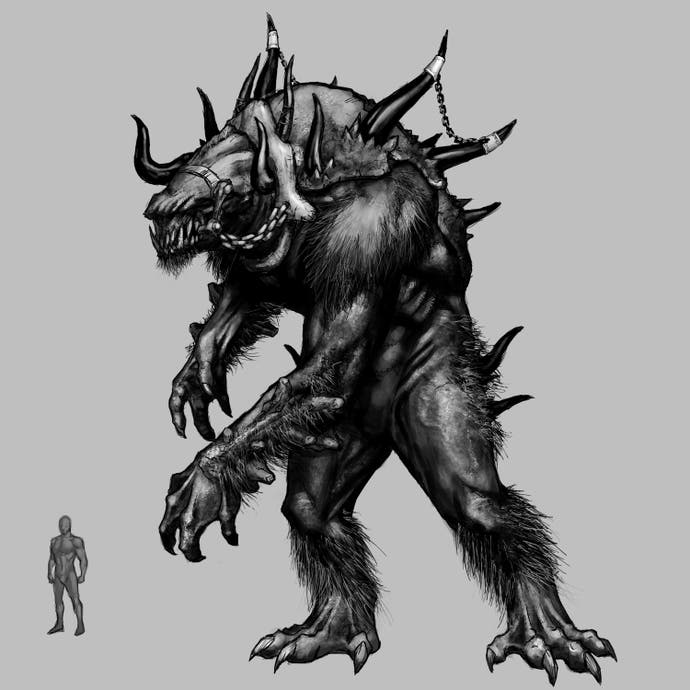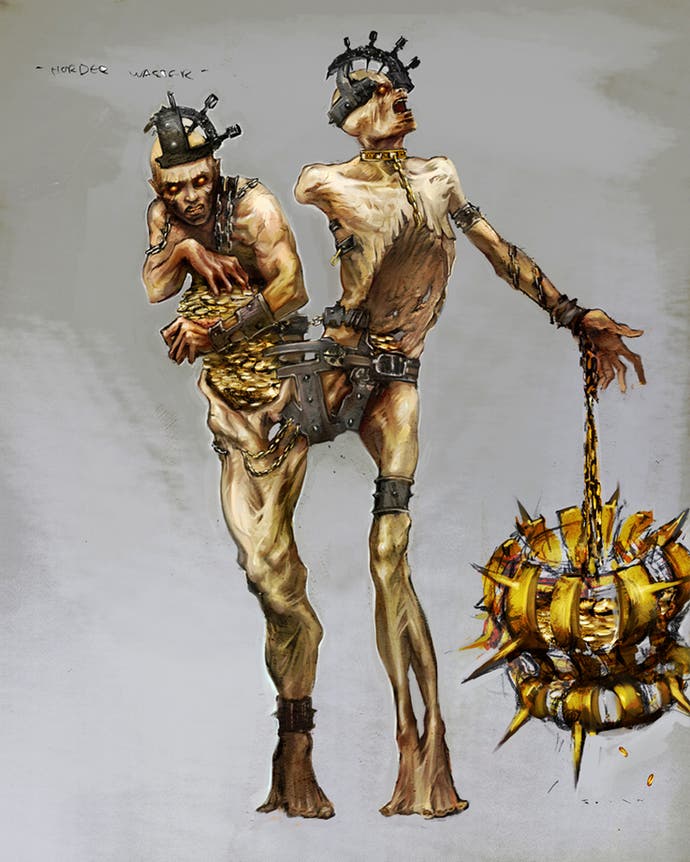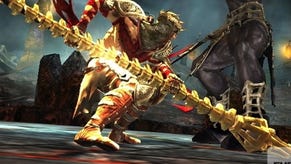The Art of Dante's Inferno
Wayne Barlowe on raising Hell.
"We're sitting in the Milton room by the way," Wayne Barlowe confides, with a twinkle in his eye. We've just been talking about Paradise Lost, the English writer's 17th-century epic poem, and the defining literary influence on Barlowe's artistic life.
"I read Paradise Lost a number of years ago - probably nearly 20 years ago now - and it got under my skin, and has provided me in my own personal work with the sensibility and underpinnings that appealed to me."
It's claimed that Milton conceived of the idea for his great work in this very building, the Hotel Astoria in central Florence, the Tuscan city that was also the birthplace of Italy's epic poet, Dante Alighieri.
He's the real reason we're here, his home city chosen by EA for the unveling of the game based on the first canto of Dante's The Divine Comedy. Which Barlowe, the Milton-obsessed Hell-sketcher, is now helping to realise in digital form: the renowned fantasy artist is working on character creation for the game. Neat.
"Dante I read in college; that had a completely different feel to it, and I loved it for what it was, but something about Milton's anti-heroics and all of that was very appealing," he reveals.

But as a student, he turned directly to the Italian for inspiration. "I thought that Dante was so provocative I ended up doing a series of paintings on it. I had this vision of doing this vertical sequence of paintings taking you all the way down to Hell. I only did three; I left college early. I've spent about 20 years doing my own vision of hell - it's never going to go away."
Beyond its literary history, Florence is most celebrated as the cradle of the European Renaissance, where the likes of Michelangelo and Leonardo Da Vinci made waves with impeccably carved male buttocks and paintings of sour-faced women. Barlowe's visual cues, however, come from further afield.
"I would look backwards to the late 19th century, to Orientalists and symbolist painters in particular," he says. "For me it was the apotheosis of the ability to put paint on board, people rendered beautifully, but they also had just the right degree of narrative influence in their work. And so that area is very dear to my heart."
His most notable collection of Hell art is the 1998 book Barlowe's Inferno, and it was this work that eventually led EA to get Barlowe on the blower.

"I first saw Barlowe's Guide To Extra-Terrestrials when I was a kid," says Jonathan Knight, the project lead on the Dante's Inferno game. Realising what he's just implied, he turns to his colleague and adds: "You were practically a kid drawing them; I don't want to age you too much!" (Barlowe was 21 when the book was published in 1979. He's now 51.)
"Years later, thinking about this game, we came upon Barlowe's Inferno - a series of paintings, really his own unique take on hell. The visual style of them is just so amazing, bold. Exactly what we were looking for. I kept going home every night to my wife saying, 'I can't get any drawings that are as good as this guy Wayne Barlowe'. She said, 'Why don't you just call him and have him do the game for you?'."
His wife hadn't accounted for pride. Knight thought the team could do it themselves, but she knew best. "Sure enough, four weeks later, she's right," Knight confesses with a chastened grin. "I picked up the phone and there was a friendly voice on the other end. To my good fortune he said, 'I can start Monday' and we jumped right in. Listen to your wife."
It proved a timely no-brainer for Barlowe: "There are moments when you have breaks between work, and that happened to be one of them. And I'm always eager to put my own work aside to work on a show or a project like this. It became really clear to me that [Knight] had a very fresh, unique vision for this story that would bring it to the public in a way the old text perhaps couldn't."










